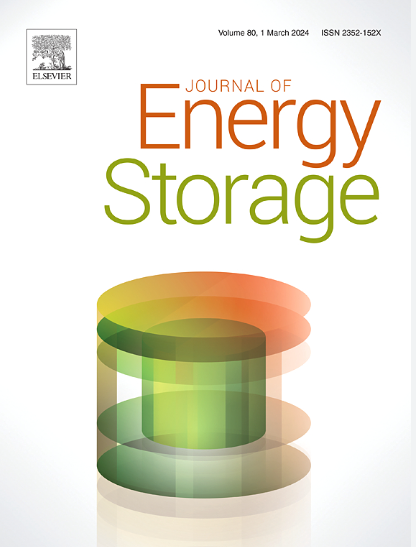Thermodynamic and economic analysis of solar-assisted chemical looping electricity storage system
IF 8.9
2区 工程技术
Q1 ENERGY & FUELS
引用次数: 0
Abstract
Three types of oxygen carriers (Mn-based, Co-based, and Cu-based) are employed in solar-assisted chemical looping electricity storage (SCLES) systems with two different regenerator layouts (Scheme I and Scheme II). Scheme I and Scheme II feature increasing the inlet stream temperature and the outlet stream temperature of the charging compressor, respectively. If system efficiency is treated as the evaluation criterion, Scheme II shows promising thermodynamic potential. By comparing the thermodynamic performances of the three types of oxygen carriers, the SCLES system using the Mn-based oxygen carrier has the highest system efficiency, reaching 50.32 %. It is at least 4.64 % and 15.31 % higher than that of the Co-based oxygen carrier and Cu-based oxygen carrier, respectively. Through economic assessment, the levelized cost of electricity storage (LCOES) of the SCLES using Mn-based oxygen carrier is at least 2.04 % and 24.4 % lower than that of the Co-based oxygen carrier (LCOES = 0.098 $/kWh) and the Cu-based oxygen carrier (LCOES = 0.127 $/kWh), respectively. The operation parameters are as follows: the heating temperature of solar is 1200 °C, the charging temperature is 960 °C, the temperature difference between charge and discharge is 10 °C, and the reaction pressure is 2 bar. It is successfully verified that the Scheme II using the Mn-based oxygen carrier is superior to other designs in terms of economic and thermodynamic performance.
太阳能辅助化学环蓄电系统的热力学和经济性分析
三种类型的氧载体(mn基、co基和cu基)被用于太阳能辅助化学环蓄电(SCLES)系统中,该系统具有两种不同的蓄热器布局(方案I和方案II)。方案一和方案二的特点是分别提高增压压缩机的进口流温度和出口流温度。如果以系统效率作为评价标准,方案二具有良好的热力学潜力。对比三种氧载体的热力学性能,采用锰基氧载体的SCLES体系效率最高,达到50.32%。它比co基氧载体和cu基氧载体分别高出至少4.64%和15.31%。通过经济性评估,锰基氧载体的储能平准化成本(LCOES)比钴基氧载体(LCOES = 0.098 $/kWh)和铜基氧载体(LCOES = 0.127 $/kWh)分别至少降低了2.04%和24.4%。运行参数如下:太阳能加热温度1200℃,充电温度960℃,充放电温差10℃,反应压力2bar。成功地验证了方案二使用锰基氧载体在经济和热力学性能方面优于其他设计。
本文章由计算机程序翻译,如有差异,请以英文原文为准。
求助全文
约1分钟内获得全文
求助全文
来源期刊

Journal of energy storage
Energy-Renewable Energy, Sustainability and the Environment
CiteScore
11.80
自引率
24.50%
发文量
2262
审稿时长
69 days
期刊介绍:
Journal of energy storage focusses on all aspects of energy storage, in particular systems integration, electric grid integration, modelling and analysis, novel energy storage technologies, sizing and management strategies, business models for operation of storage systems and energy storage developments worldwide.
 求助内容:
求助内容: 应助结果提醒方式:
应助结果提醒方式:


